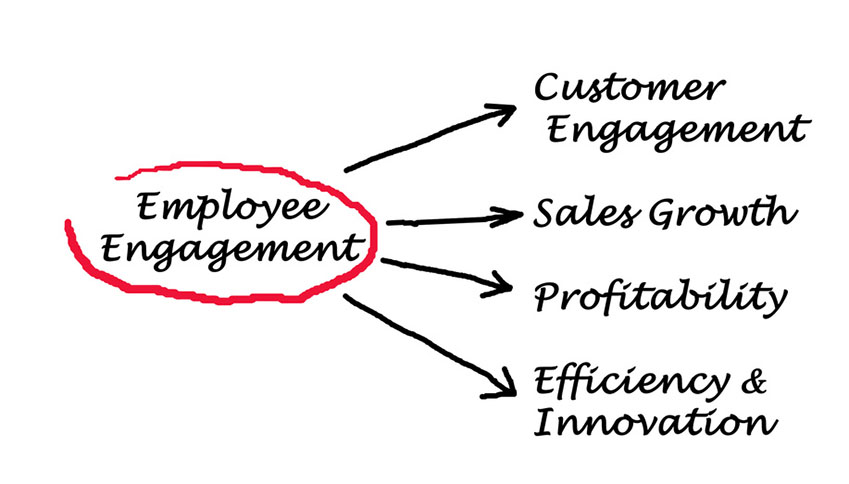Recently I acquired a deeper appreciation for artwork while participating in a few “paint parties,” where an artist helps a group of novice individuals paint on canvas. Some who attend leave with a cute picture, and others leave with something that never sees daylight again (happy to provide samples from my growing collection!) It is no doubt a fun experience. I find it interesting how one person can throw a bunch of paint on a canvas and create an abstract masterpiece; whereas, others carefully plan out their artwork like Thomas Kinkade. Companies seem to approach the employee experience the same way, some are proactive while others are reactive.
According to Daniel Burrus, author of the book called The Anticipatory Organization, in order to have a competitive advantage a company must embrace an anticipatory culture paired with a shared view of the future. An anticipatory organization studies hard and soft trends, and makes future strategic business decisions based on these trends. According to Burrus, an abstract, reactionary approach to the employee experience will no longer be acceptable. Previously used methods for engaging and motivating employees are growing stale, and an anticipatory mindset must be used to align the employee experience with global trends and the strategic goals of the firm. According to Joseph Grenny (Vital Smarts) purpose, connection, and mastery are the keys to motivation and engagement.
Purpose
Many companies have defined a mission statement, a vision statement, and core values. However, how many of these firms stay connected to them on a daily basis? Recently a CEO explained that for many years their mission statement was displayed on the wall but no one was connected to it, and it certainly was not thought about when making decisions. As a result of this, the company decided to throw out the old mission statement and create a new one with the help of all employees. He realized how many leadership teams, including his, create the mission, values, and vision of the organization without the input of employees. He described how the culture and engagement level at his firm has significantly improved through this process. Do your employees know how their purpose connects to the larger company purpose? If your culture and/or engagement needs a reboot, this may be the perfect place to start in your company as well.
Connection
Think back to the last time you were a “newly hired” employee, what were your thoughts and feelings during that time of change? Was there someone who reached out to help you become acquainted to the new workplace, besides the HR Department or your manager? If not, would that have made the experience better? This may be mushy to some but in his Gallup article, Jake Herway talks about the importance of helping people to feel a sense of belonging or connection with the workplace. A disconnection between employees and the workplace can lead to decreased engagement and increased turnover. Without just assuming, do you know if employees feel connected to your organization and/or team?
Mastery
Throughout our careers we develop skills and competencies based on the knowledge and experience accumulated. Both formal and informal methods are used, and many times we crave these opportunities. Younger generations are very eager to learn and grow, which largely drives where they want to work. If, as employers, we are not providing employees with a platform for development, we will continue to react to unhealthy levels of turnover. There is a bigger return on investment when providing learning opportunities to the existing workforce, than the constant training of new hires. Has your company embraced a development strategy to help the workforce achieve mastery in a variety of skills?
There is no exact science for anticipating the future or predicting what the workforce will demand in the months and years ahead. It is important that we understand that we cannot turn a blind eye to the needs of an evolving workforce and assume that what we have always done successfully in the past will continue to be relevant. It is critical that we continue to keep a pulse on the employee experience in our organizations, ensuring that employees are engaged and motivated. Employees who are energetic and have a passion for what they do and who they do it for, will be best positioned to anticipate and exceed the needs of clients or customers.
I will be talking in more depth about employee experience and the interaction with the client experience at the CXps 2018 event May 21-23, 2018. Consider joining me by registering at https://clientexperience.org/. I look forward to continuing the conversation with you!
Krisi Weierbach, Ph.D. is the Director, Workforce Advisory at Stambaugh Ness. She is a Thought Leader with a passion for making a difference, collaborating with clients, leveraging strengths, implementing action plans, and achieving results. Kristi focuses her extensive expertise on helping clients create a unique human resources architecture, applying practical solutions that complement strategic goals and company culture. Her deep human resources knowledge enables her to help companies overcome their struggles by providing strategic direction on implementing and improving policies and procedures.

